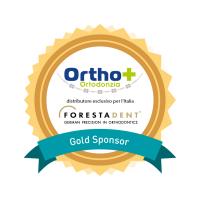Abstract
Obstructive Sleep Apnea Syndrome in Children: the Role of the Orthodontist
by Luzzi Valeria
The involvement of impaired respiration and in particular the relevance of airway obstruction as well as its presumed effect on craniofacial growth continues to be a topic discussed in the medical and dental literature in the pediatric field. Sleep Respiratory Disorders exhibit a spectrum of severity ranging from Primary Snoring or PS, which identifies the mildest clinical manifestation, up to Obstruction Sleep Apnea Syndrome, which represents the most severe form. Although the main aetiology of pediatric OSAS recognizes adenoidal and tonsillar hypertrophy as the main cause, risk factors must be considered in the aetiology of OSAS in pediatric age, such as factors predisposing to the increase in nasal resistance, such as above all the structural anomalies of the jaws. Therefore, as defined by the ministerial guidelines, the clinical evaluation of the orthodontist in the early recognition of the subject suffering from OSAS is based on the role of epidemiological sentinel aimed at identifying those extraoral and intraoral clinical signs that are pathognomonic of the malocclusion phenotypes associated with OSAS. This early diagnosis will allow specific orthodontic/orthopedic therapy protocols to be drawn up through orthopedic expansion of the upper jaw and/or mandibular advancement, contributing to the improvement of the severity of OSAS in children
Learning Objectives
After this lecture, you will be able to collect the anamnestic data aimed at detecting the diagnostic suspicion of a Respiratory Sleep Disorder which will lay the foundations for the execution of polysomnography, the gold standard for OSAS diagnosis
After this lecture, you will be able to know the types of malocclusion and occlusal phenotypes associated with OSAS in the pediatric age
After this lecture, you will be able to know the orthopedic/orthodontic therapy protocols in children affected by OSAS with the aim of reducing the severity of OSAS












